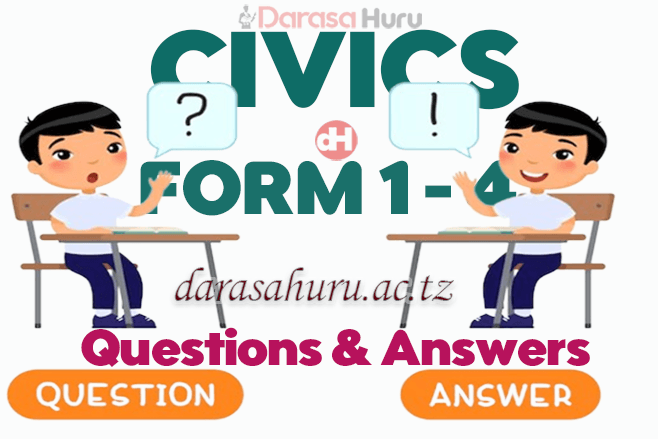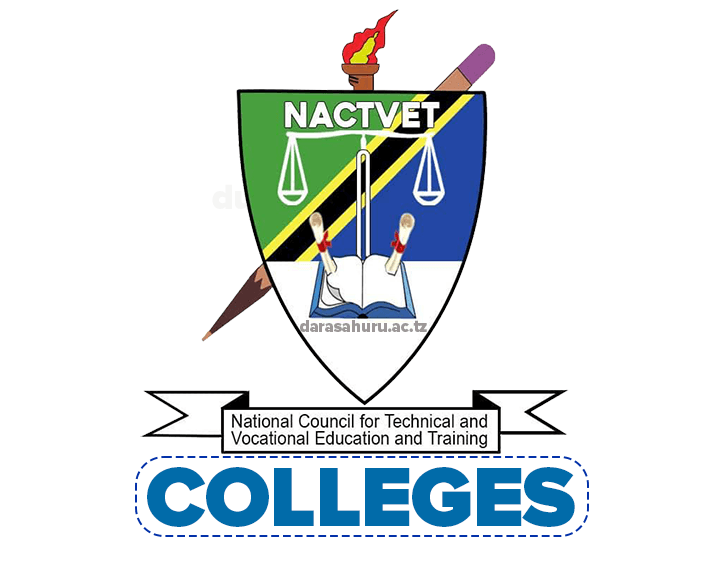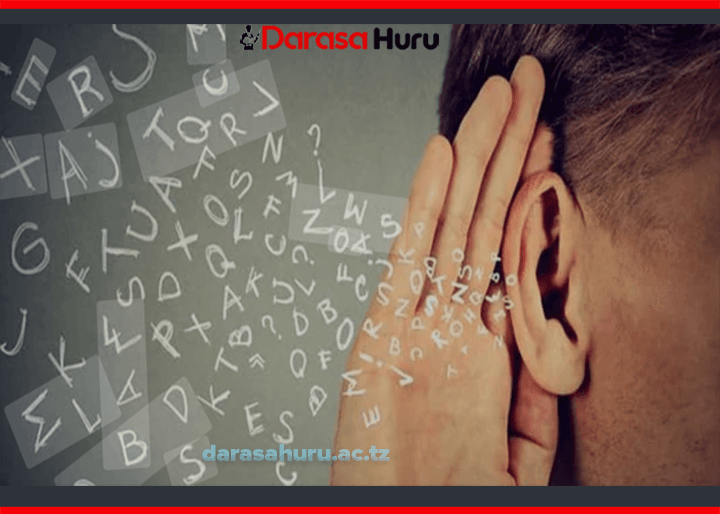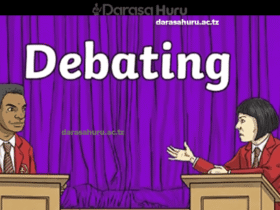Chapter Five – Reading for Comprehension – English Form
Introduction
Reading for comprehension enhances your usage of various words in different contexts, improves fluency and deepens understanding. In this chapter, you will engage in activities that involve expressing the main ideas from written texts, inferring meanings, and relating messages from the texts to the real-life experiences. The competencies gained will enhance your ability to comprehend main ideas, meanings, and messages from various written sources, ultimately contributing to academic achievement.
Think about:
- how reading a text benefits English language learners.
- the importance of extracting main ideas and messages from written sources.
- the significance of relating messages from a text to the real-life experience.
Activity 1: Expressing the main ideas from texts
(a) Read the following telephone conversation and identify the main ideas.
Receptionist: (Phone rings) Hello! This is Imperial Hotel; how can I help you?
Jane: My name is Jane Ndunguru. I wish to make a reservation.
Receptionist: When is the reservation for?
Jane: Tuesday to Saturday next week. I will check out on Saturday morning.
Receptionist: That’s possible. How many rooms?
Jane: Two double rooms, please.
Receptionist: That will be fine.
Jane: What’s the rate?
Receptionist: One double room is eighty thousand Tanzanian shillings per night.
Jane: Very good. See you on Tuesday.
Receptionist: Welcome.
Jane: Thank you, bye!
Did you know?
“Expressing the main ideas from a text” refers to the process of identifying and clearly communicating key points or central messages of the text. This process involves understanding the key concepts, themes, or arguments and summarising them in one’s own words.
For example, if a passage is about the effects of climate change on Mount Kilimanjaro, the main idea might be “Climate change wipes out glaciers on Mount Kilimanjaro, threatening tourism.” Expressing this main idea involves distilling the text’s most significant points and articulating them concisely.
This skill helps students focus on the core content of what they read, ensuring that they grasp the primary messages rather than getting lost in details.
(b) Read the story “A Gold Medal for Tanzania”. Then, answer the question that follows.
A Gold Medal for Tanzania
The stadium was full of spectators from all over the world. My heart was beating so fast and loudly that I thought my fellow athletes could hear it. I was one of the hundred marathon runners representing our respective countries. It was the first time for me to participate in that historic event. We were all called to the starting line. Spectators shouted the names of their favourite athletes, “Otieno! Okamoto! Haibe…!” I did not hear my name. Then, the gun went “BANG”, and off we went.
I knew it was not an easy task to run 42 kilometres, although it seemed easy at the beginning. We climbed several hills and crossed some valleys. I saw a signboard beside the road reading, ’20 km’. “Twenty more to go,” I said to myself. Up to this point, I guess I was the 60th in the race. I already felt a little tired. My legs were aching. My chest and throat were dry.
However, deep inside me, something encouraged me to keep going. I started singing silently. “Musa, keep on and on and out…” The song made me feel stronger. I surged forward and left some runners behind. When we got to the signboard beside the road reading ’10 km’, I was among the ten runners leading the race. I could read the names of some runners in front of me. The names of their countries were also pinned to their vests: Somalia, Ethiopia, Kenya, the USA, Morocco, Japan, Egypt, Namibia and Eritrea. I knew those behind me could also read Tanzania on my back.
Suddenly, the Kenyan runner increased his speed and started to leave us behind. He ran like a gazelle. I made a quick decision that the Kenyan runner should be my target. I remembered all the techniques I had learned while preparing for the event in Arusha. I had developed one technique to help me feel at ease and increase my speed, even when I was tired. I had made up a chant to go in time with my steps as I ran. I now remembered it and started chanting to myself.
Aka-aka chaka-ka Aga-agasaga-ga Apa-apa chapa-pal
I saw the distance between the Kenyan athlete and myself was decreasing. A signboard by the side of the road read ‘5 km’. “Only 5 kilometres to the finish,” I muttered.
The spectators were shouting with excitement, “Come on, Kenya! Come on, Tanzania!” I decided to use the little strength I had left as we entered the stadium to finish the race. It was now a two-person affair. However, the Kenyan was still a metre ahead. I surged forward. We were now running shoulder to shoulder. “It’s now or never”, I muttered to myself. The spectators on the terrace were on their toes, yelling at the top of their voices. I closed my eyes, raised my arms high and sprinted. Then, something touched my chest. It was the finishing tape.
When I opened my eyes, someone was shaking my hand. “Congratulations, Musa, you’ve done it,” he said. I was immediately taken to a private room, where the doctor took a sample of my blood and urine for testing. A few minutes later, he announced to his colleagues and other Olympic officials, “No sign of drugs.” That’s how I won a Gold Medal at the Olympics.
Adapted from English for Secondary Students Book, Form Two 2018 (pg. 56-60)
Questions
- What is the story about?
- How long was the race?
- How did Musa feel at the start of the race?
- How many runners participated in the race?
- Which name was not shouted?
- Who ran like the gazelle?
- What technique did Musa use to win the race?
- What was Musa tested for after winning the race?
- What are the main ideas from the story?
- How would you summarise the story in two paragraphs?
(c) Read the following passage and then answer the questions that follow:
Mary’s Wedding Ceremony
As Mary walked down the aisle to meet her bridegroom, her husband-to-be, she could not stop smiling. There he stood, so handsome in his black suit and smart necktie. He, too, was smiling at her as he held out his arms to welcome her.
All the preparations for this great day flashed through her mind. She was lucky as her relatives had liked John from the very first day he was introduced to them by the go-between, Mr Masako. She was not surprised as John was such a charming person. The discussion was easy. She had already discussed the bride price with her family, and they agreed. So, to the surprise of the go-between, her father said, “We don’t want any bride price. John should use his money to work with Mary to build a happy and loving marriage. We know he will remember us too, for we have looked into his heart and seen that he is generous.”
Afterwards, the go-between handed over the presents John had already prepared, and the wedding preparations began.
Mary smiled even more as she remembered all those preparations. She hardly had time to think of the marriage itself. First, there was a kitchen party organised by her mother, aunts and closest friends. Of course, the kitchen party was for women only, all of whom advised her on how to behave to have a successful marriage. She wondered whether they followed their advice, but she was grateful for their support. Thereafter, a send-off party was again organised by her family, but John had supported them from behind the scenes. It was a big occasion that allowed all of Mary’s relatives and friends to see her wonderful husband-to-be. They were not disappointed. Now, at last, on 29 July 2018, she was walking down the aisle. When she walked out again, she would no longer be alone but hand-in-hand with her husband.
The wedding service lasted an hour. They took their marriage vows to live faithfully as husband and wife till death separates them. Then, each one placed a beautifully crafted golden wedding ring on the finger of the other. When Mary looked at her ring, she felt so happy that she wanted to sing, dance and ululate. However, she controlled herself as she heard the pastor declare them husband and wife.
The wedding reception was held at Milmani by Night Hall from 7.00 p.m. The hall was beautifully decorated, and everyone admired the decorations as they entered. The Master of Ceremonies (MC) took the microphone and asked the guests to take their seats. Then, the bride and groom entered the hall flanked by the best man and matron and preceded by their flower girls and boys.
Then, there were introductions and speeches by John’s and Mary’s parents. Thereafter, a three-tier wedding cake was cut up, and everyone who wanted had a slice. After that, the guests ate food and gave presents to the bride and the groom. In between, everyone ensured they could dance and, after the presents, the newly married couple officially opened the dance. Finally, they said goodbye and left for their honeymoon at Motel Blue Sky.
Questions
- What do you think is the overall message of the story?
- Why did Mary’s parents choose not to accept the bride price?
- What does the passage say about the purpose of the kitchen party, and what is your opinion on it?
- How would it be if the wedding reception was held at home instead of a hired hall?
- Where did Mary’s family get money to organise the send-off party? Do you think they should have sought contributions from friends and colleagues?
(d) Read the text below and answer the questions that follow.
A Visit to the Ngorongoro Conservation Area
My name is Juma. When I was young, I used to see wild animals on television, but that was not enough for me. I always wanted to see them in their natural habitat. My mother promised to take me to one of the national parks during the holidays.
The following month, my mother took me to the Ngorongoro National Park. This was my opportunity to see the animals in their natural habitat. It took us just a few hours to reach the area from Arusha.
Upon arrival, we were welcomed by the game wardens. They guided us to where we could see all the animals. As we drove along the road, we saw lots of animals grazing, such as antelopes, deer, elephants, zebras and rhinos. We also saw lions stalking in the distance.
A few minutes later, we heard a loud noise. When we looked up, we saw a helicopter hovering over a large clump of trees. The game warden explained that the helicopter was on anti-poaching patrol. He said that poachers were bad people who killed elephants for their tusks and rhinos for their horns. Elephants and rhinos are in danger of becoming extinct because of such poachers.
In the afternoon, the wardens took us to a hotel in the park for lunch. Then, we left and spent the night at Karatu.
Questions
- What did Juma use to see on television when he was young?
- Why did the warden say that poachers are bad people?
- Why does Juma believe that watching animals on television is not enough?
- What would be the consequences if poaching is uncontrolled?
- How are anti-poaching patrols being carried out, and what do you think about the strategy employed?
Exercise 1
- Extract the main ideas conveyed in the text in (d).
- Write short notes on “A short visit to the Serengeti” using the words habitat, game warden, national park, grazing, anti-poaching and hotel.
(e) Read a paragraph from a textbook of your choice. Then, answer the following questions:
- What is the main idea of the paragraph?
- How does the main idea relate to the overall theme of the text?
- Which specific words or phrases in the paragraph highlight its main idea?
- How would deleting this paragraph affect the text’s overall message?
- How does the main idea of this paragraph help in understanding the text?
Activity 2: Inferring meanings
(a) Study the following pictures and answer the questions that follow.
Questions
- What do you see in the pictures?
- What are the animals doing in the pictures?
- Why do you think the dog is at the side of the road?
- How do you think the animals feel?
Did you know?
In Activity (a), you inferred the meaning from the two pictures. Inferring meaning from a picture or text means figuring out what something means, even if it is not explicitly stated or shown. You use clues from the picture or text along with your previous knowledge to understand meanings or emotions. For example, by interpreting the actions of the cat and the dog, you may understand what they are feeling or thinking.
For example, if a piece of text describes a character as ‘clenching their fists and gritting their teeth’, the reader might infer that the character is angry or tense, even if the text does not directly state so. This ability to infer meaning helps students gain a richer understanding of the text and enhances their overall comprehension.
Exercise 2
Use the inferences you have made from (a) to write a short story about the pictures.
(b) Read the passage and answer the questions that follow:
Theft
It was a dark night. The moon was hidden by clouds, and there were no lights on the streets. It was late, and nearly everyone was asleep in bed. One man, however, was not asleep. He was dressed in dark clothes, and he tried each door to see if it would open as he walked quietly down the street. All the doors on the first street were locked, but when he turned to the next street, he found one that was not locked. The thief cautiously pushed the door open and stepped into the house. Snoring from several rooms indicated that the people were in deep sleep. He waited for a few minutes to see clearly in the dark. Then, he saw a bed beside a far wall. A man was sleeping in it. Close to the bed, on a table, stood the man’s radio. The thief tiptoed to the table, quietly picked up the radio, and put it into his sack, which he had brought to carry things.
On the table was a shelf with a metal box in it. There was probably money in that. It, too, went into the bag. The thief tiptoed around the room. He took a shirt from a low stool and a pair of socks from the floor beside the stool. Under the window was another table with only a piece of paper on it. The bag with the stolen goods was now full. He heard the sound of a person turning over in bed from the next room, so he picked up his bag and left as stealthily as he entered. Once more, he went through the quiet streets stealthily.
Later, he reached home, put the radio and the metal box under his bed, and hid the sack in a big box where he kept stolen clothes. He padlocked the box and put the key under his pillow. Then, he fell asleep.
Three days later, it was announced that the police had apprehended him at his house with stolen items. He was taken to court and, upon being found guilty, was sentenced to jail. His actions left his loved ones in agony and shame.
Adapted from Ministry of Education (1977, p. 62)
Questions
- What is the story about?
- What is interesting about the story?
- Who is the masked man?
- What is he doing?
- What societal or psychological factors could have influenced his behaviour and subsequent arrest?
- How might the legal system’s response reflect broader societal attitudes toward crime and punishment?
(c) Look at the following picture and answer the questions that follow orally.
Questions
- What messages do you get from the picture?
- Why are there candles placed in front of the picture?
- How did you feel about it?
(d) Read the passage below and answer the questions that follow.
Mr Korombo’s Death
Mr Korombo, a retired teacher, passed away suddenly in his early seventies. His death shocked his fellow villagers. That morning, he had gone to the toilet and stayed there for a long time. His wife was worried that something was wrong. She knocked at the door, but there was no response.
Luckily, his only son had just arrived home to see his parents. When he heard his mother’s shout, he went running. He quickly took a hammer and broke down the toilet door. He entered the toilet and found his father lying on the floor unconscious. They quickly rushed him to the hospital. At the hospital, the doctor in charge announced that the father had died on the way to the hospital. The post-mortem revealed that the old man died of high blood pressure. The body was taken to the mortuary, where it was kept for three days.
The wife, son, relatives, and neighbours arranged for the funeral. They hired transport and bought a coffin, candles, a cross, and wreaths. The mourners signed the condolence book and contributed some money to the family of the deceased.
On the third day, the body was taken from the mortuary for burial. Before the burial, the mourners paid their last respects. A short funeral sermon was given. Later, the body was lowered into the grave. The mourners filled the grave with soil and placed wreaths and candles on it. A gravestone and a cross were also planted on the grave. Finally, a brief history of the old man was read and thereafter, mourners left the graveyard. Many of them went to the house of the deceased for their final meal together.
Questions
- How might the son’s role in breaking down the door and dealing with the subsequent events influence his grieving process and sense of responsibility?
- What was the cause of Mr Korombo’s death? Why were the villagers shocked?
- How do the social and cultural practices surrounding Mr Korombo’s death, such as the funeral arrangements and mourning rituals, reflect the community’s values and attitudes towards death?
- Reflecting on the circumstances surrounding Mr Korombo’s death, what could have been done to potentially prevent this tragedy?
- How can this story help you in your relationships or interactions with others?
(e) Read the passage below and complete the items that follow:
Jacob Reed at the Court
The courtroom was packed with people eagerly waiting to witness the trial of the infamous Jacob Reed. The judge entered, and everyone rose to their feet. Jacob sat at the defendant’s table, his face expressionless, but his eyes darted nervously around the room. His lawyer whispered something into his ear, and Jacob just nodded, grumbling under his breath.
The prosecutor began presenting the case, detailing the crimes Jacob was accused of committing. Each subsequent accusation seemed worse than the last, and the audience gasped at the severity of his actions. Jacob’s mother sat in the front row, tears rolling down her cheeks, unable to believe that her son was capable of doing such things.
Witnesses were called to the stand, each one pointing a finger at Jacob, identifying him as the man responsible for a string of robberies across the city. The evidence was overwhelming, but Jacob continued to deny his involvement. He leaned back in his chair, his arms crossed, grumbling again as the prosecutor questioned another witness.
During a brief recess, Jacob’s lawyer tried to convince him to take a plea deal. “You’ll get a lighter sentence if you confess,” the lawyer urged. But Jacob refused, his stubbornness evident in the way he clenched his fists. He muttered something angrily, his voice low and grumbling, refusing to admit guilt.
As the trial resumed, the prosecutor called the final witness: a young woman who had been a victim of one of Jacob’s crimes. Her voice trembled as she recounted the terrifying experience, and the room fell silent. Jacob’s grumbling grew louder, but the judge quickly silenced him with a stern glare.
In the end, the jury deliberated for hours before returning with a verdict. The room held its breath as the foreman stood up and read the decision: “Guilty on all charges.” Jacob’s mother sobbed uncontrollably while Jacob sat motionless, no longer grumbling but staring blankly ahead.
The judge delivered the sentence, and as Jacob was led out of the courtroom in handcuffs, he finally spoke. “I didn’t do it,” he muttered, but his voice was drowned out by the chatter of the crowd. The courtroom emptied, leaving behind only the echoes of Jacob’s grumbling denials and the lingering sense of justice served.
Practice
- Read the last paragraph of the passage. Based on the events and details provided, predict what you think will happen next in the story.
- Write a few sentences explaining your prediction. Make sure to support your prediction with evidence from the text.
Activity 3: Relating messages from the text to real-life experiences
(a) Read the passage and answer the questions that follow.
Sports Day
On Friday last week, Azania Form Two students went to Kibasila Secondary School for a friendly football match. The day was hot, and the playground was packed with students from the two schools. All the students looked excited as the Azania players jumped out of the bus. Both Kibasila players in red and Azania players in blue looked confident.
Their teachers directed the players to the changing rooms. After a while, the linesmen and the referee led the teams to the centre of the pitch. The fans and supporters of the two sides chanted and applauded. At last, the match started.
In the fifth minute, the Azania midfielder dribbled the ball past the Kibasila defence and easily scored. In the 20th minute, the Kibasila centre-back, Bakari, received a cross-kick from Amani, the left winger. Without hesitation, Bakari connected the pass to register an equaliser. This lifted the Kibasila fans and silenced the Azania side. Despite the efforts of both teams, the score remained 1-1 up to the final whistle.
Questions
- How does the story relate to your own life experiences?
- How does the message or theme of this text connect to what is happening in the world today?
- Can you think of a current news story or current event that connects to the events or ideas in this passage?
- How might the lessons from this text help you in a future situation?
- What are the potential psychological impacts on the Azania team after their goal was equalised by Kibasila?
(b) Read carefully the passage below and answer the questions that follow.
Slavery
Slavery is a system in which one person or group owns and controls others. They buy and sell them like commodities. In the slavery economic system, enslaved people are used to produce for their owners.
In pre-colonial Africa, slavery was quite common. People acquired enslaved people by taking prisoners in war or kidnapping them from neighbouring communities. Sometimes, such communities had to pay tribute or give enslaved people as taxes to powerful rulers. Enslaved people were used as labourers on farms and in homes, and they were taken as porters in trade. Some trusted enslaved people became agents or managers for their masters, and sometimes they even became kings themselves, like Jaja of Opobo in West Africa.
Thus, in Africa, in general, enslaved people in many societies were accepted into their owners’ families and treated less harshly. They were often given land and allowed to marry and have children. The situation changed with the coming of the Transatlantic Slave Trade to the Americas, where enslaved people could be beaten, killed and separated from their families with impunity.
Questions
- How does the story relate to your personal experiences or challenges?
- Have you encountered a situation related to the one in the story? How did you deal with it?
- How does the message or theme of the text connect to current global or local issues?
- Can you link the story to any recent news or current events?
- What is the main lesson of the text, and how can it be applied to your life?
- How has the text influenced your perspective or inspired you to make changes?






























Leave a Reply